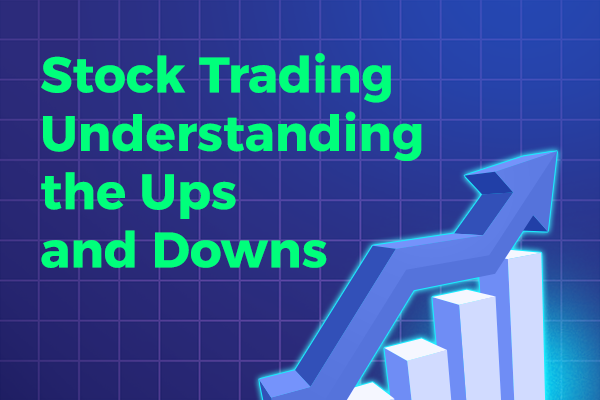Are you someone who is interested in investing in the stock market but doesn’t have the time or expertise to dive into the world of long-term investments? Spot stock trading could be the solution for you. As one of the most popular forms of stock trading, it offers the potential for quick profits and a fast-paced trading experience. However, it also comes with its own set of risks and downsides.
In this article, we’ll explore the pros and cons of spot stock trading and help you decide if it’s the right choice for your investment strategy.
From the potential for high returns to the risks of market volatility, we’ll cover all the key factors to consider before diving into this exciting but challenging world. So, whether you’re a seasoned trader or a newcomer to the stock market, keep reading to find out if spot stocks trading is the right choice for you.
What is spot stock trading?
Spot stock trading is a type of trading where investors buy and sell stocks on the spot, with the intention of profiting from short-term price fluctuations. In contrast to long-term investments where investors hold onto stocks for a period of months or even years, spot stock strading involves buying and selling stocks within a matter of days, hours, or even minutes.
This type of trading allows investors to take advantage of short-term market fluctuations and earn quick profits. Spot stock trading is also known as day trading or intraday trading.
Pros of spot stock trading
One of the biggest advantages of spot stock trading is the potential for high returns. Because spot stock trading involves buying and selling stocks quickly, investors have the potential to earn significant profits in a short amount of time.
Spot stock trading also allows investors to capitalize on market volatility. When the market is rapidly changing, investors can quickly buy and sell stocks to take advantage of price fluctuations.
Another advantage of spot stocks trading is the fast-paced trading experience. Unlike long-term investments where investors must wait for months or even years to see a return on their investment, spot stock trading offers a more immediate gratification.
This can be particularly appealing to investors who enjoy the thrill of trading and want to see results quickly.
Spot stocks trading also offers investors a high degree of control over their investments. Investors can decide which stocks to buy and sell, how much to invest, and when to enter and exit the market.
This level of control allows investors to react quickly to market changes and make decisions based on their own research and analysis.
Cons of spot stock trading
While spot stock trading offers the potential for high returns, it also comes with its own set of risks and downsides. One of the biggest risks of spot stocks trading is market volatility.
Because spot stock trading involves buying and selling stocks quickly, investors are more susceptible to market fluctuations. If the market changes rapidly, investors may not have enough time to react and may suffer losses as a result.
Another downside of spot stocks trading is the high level of competition. Because spot stock trading is popular among investors, competition for the best stocks can be intense. This can make it difficult for new investors to enter the market and find profitable trades.
Spot stock trading also requires a significant amount of time and effort. Unlike long-term investments where investors can take a more hands-off approach, spot stocks trading requires constant monitoring of the market and quick decision-making. This can be stressful and time-consuming for investors who have other commitments.
Unlock Wealth: Sign Up Now for Smart Investing Success
Spot stock trading vs. other forms of trading
Spot stocks trading is just one of many types of trading available to investors. Other popular forms of trading include swing trading, position trading, and trend trading.
Each of these trading styles has its own advantages and disadvantages, and investors should choose the one that best suits their investment goals and risk tolerance.
Swing trading, for example, involves holding onto stocks for a period of days or weeks with the intention of profiting from short-term price fluctuations.
This type of trading is less fast-paced than spot stocks trading and may be more suitable for investors who want to take a slightly longer-term approach.
Position trading, on the other hand, involves holding onto stocks for a period of months or even years. This type of trading is less focused on short-term price fluctuations and more focused on the long-term growth potential of a company.
Trend trading involves buying and selling stocks based on the direction of the overall market trend. This type of trading is less focused on individual stocks and more focused on the overall market.
Risk management in spot stock trading
Because spot stocks trading involves a high degree of risk, it’s important for investors to have a solid risk management strategy in place. One of the most important aspects of risk management is setting stop-loss orders. A stop-loss order is an order to sell a stock when it reaches a certain price point. This can help investors limit their losses in the event of a market downturn.
Another key aspect of risk management is diversification. Investors should not put all their money into one stock or sector. Instead, they should spread their investments across multiple stocks and sectors to minimize risk.
It’s also important for investors to have a clear exit strategy in place. This means knowing when to sell a stock and take profits or cut losses. Having a clear exit strategy can help investors avoid emotional decision-making and make rational decisions based on market data.
Spot stock trading strategies
There are many different strategies that investors can use when spot stocks trading. Some popular strategies include:
– Scalping: This involves buying and selling a stock quickly to profit from small price movements.
– Momentum trading: This involves buying stocks that are trending upwards and selling stocks that are trending downwards.
– Contrarian trading: This involves buying stocks that are trending downwards and selling stocks that are trending upwards.
– Range trading: This involves buying stocks at the bottom of a price range and selling them at the top of the range.
Each of these strategies has its own advantages and disadvantages, and investors should choose the one that works best for their investment goals and risk tolerance.
How to get started with spot stock trading
If you’re interested in spot stocks trading, there are a few steps you can take to get started:
1. Learn the basics: Before you start trading, it’s important to understand the basics of the stock market, including how stocks are traded, how to read stock charts, and how to analyze market data.
2. Choose a trading platform: There are many online trading platforms that allow investors to buy and sell stocks. Choose a platform that is reputable, easy to use, and has low fees.
3. Practice with a demo account: Many trading platforms offer demo accounts that allow investors to practice trading with virtual money. This can be a good way to get a feel for how spot stocks trading works without risking real money.
4. Develop a trading strategy: Choose a trading strategy that works for you and stick to it. This can help you make rational decisions based on market data rather than emotions.
5. Start small: When you’re first starting out, it’s important to start with small investments and gradually increase your investment as you gain experience.
Choosing a spot stock trading platform
Choosing the right spot stocks trading platform is crucial for success in the stock market. When choosing a platform, consider the following factors:
– Reputation: Choose a platform that is reputable and has a good track record.
– Fees and commissions: Look for a platform that has low fees and commissions.
– User interface: Choose a platform that is easy to use and has a user-friendly interface.
– Trading tools: Look for a platform that offers tools for analyzing market data and making informed trading decisions.
– Customer support: Choose a platform that offers good customer support and is responsive to your needs.
Spot stock trading fees and commissions
When spot stock trading, investors must pay fees and commissions to their trading platform. These fees can vary depending on the platform and the type of trade being made. Some common fees and commissions include:
– Trading fees: This is the fee charged by the trading platform for each trade made.
– Account maintenance fees: Some platforms charge a fee for maintaining an account.
– Inactivity fees: Some platforms charge a fee if an account is inactive for a certain period of time.
– Withdrawal fees: Some platforms charge a fee for withdrawing funds from an account.
It’s important to understand the fees and commissions associated with spot stocks trading before getting started. Investors should choose a platform with low fees and commissions to maximize profits.
Conclusion
Spot stock trading offers the potential for high returns and a fast-paced trading experience. However, it also comes with its own set of risks and downsides.
Before diving into the world of spot stock trading, it’s important to understand the pros and cons and develop a solid risk management strategy. By doing so, investors can take advantage of the potential profits of spot stock trading while minimizing their risk.





